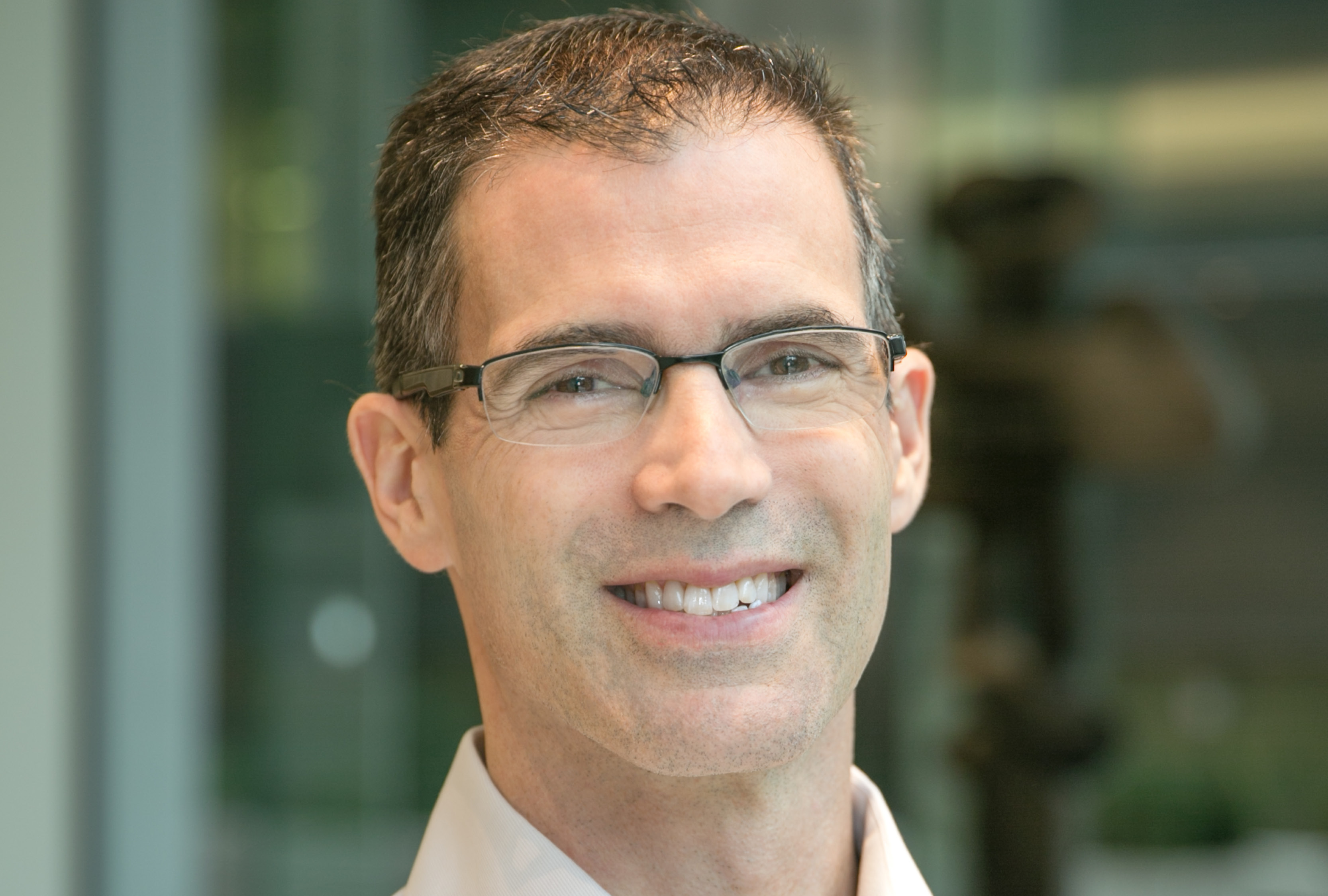This article originally appeared in the Fall 2023 issue of the Ontario Medical Review magazine.
Five solutions address hospital overcrowding
Dr. Russell Goldman’s workday typically starts early, when he checks in with the on-call palliative specialist from the night before about anything urgent that emerged overnight with his patients.
The director of the Temmy Latner Centre for Palliative Care at Toronto’s Mount Sinai Hospital has been working in palliative care for 28 years, with a practice mainly focused on home-based care.
“In terms of our patient population, about 60 per cent have a cancer as a primary diagnosis and the other 40 per cent have a serious illness like heart failure, dementia and neurodegenerative conditions,” said Dr. Goldman, whose catchment area represents about 60 per cent of the population of Toronto.
“Generally, we see patients who are at, or approaching, the end of their lives, but we also have a group of patients that we follow for months to a few years.”
Dr. Goldman has spent most of his career seeing patients in their homes, though he has also worked in other settings, such as acute care in hospital and long-term care.
His patients are among the most fortunate in Ontario in terms of access. They have access to 24/7 home-based palliative care through professionals like Dr. Goldman at the Temmy Latner Centre. Many other palliative patients in Ontario, especially those living in smaller, rural and remote areas and among underserved populations, do not have the same option.
In its newly published report, Prescription for Ontario: Doctors’ Solutions for Immediate Action, the OMA describes how too many patients remain in hospital beds, unable to be transferred to more appropriate settings, due to a lack of space, funding limitations and professionals to deliver care.
These patients are largely 65 and older and occupy between 10 and 20 per cent of beds in acute-care centres in Canada, according to the Canadian Institute of Health Information.
In the Solutions Report, the OMA advocates for increased home- and community-care capacity to help fix the overcrowding of hospitals. The report includes five solutions in this area:
The problem of patients in acute-care beds who do not require that level of care has existed in Ontario for many years. But the COVID-19 pandemic made a bad situation even worse and now the consequences of inaction are more urgent than ever.
Dr. Devon Shewfelt works in the emergency department at Alexandra Hospital Ingersoll in southwestern Ontario, where he sees many people “who would be better served in a community setting with more effective supports.”
“I do what I can with what I have where I am. And I recognize that we’re in a system that is far less than ideal and does not provide adequate care for large portions of the population. It certainly is frustrating at times” – Dr. Devon Shewfelt
“There are lots of folks who really need specialist care who just can’t get timely access to it because of the strained resources that we have,” said the family physician from London. These cases include complex geriatric patients, who show up at the emergency department even though there may not be anything acutely wrong.
 “If they don’t require admission, we may refer them to community-based home care in an effort to prevent bounce backs. However, those services are strained and aren’t positioned to respond in a timely and effective manner,” he said. “We know these patients will present over and over.”
“If they don’t require admission, we may refer them to community-based home care in an effort to prevent bounce backs. However, those services are strained and aren’t positioned to respond in a timely and effective manner,” he said. “We know these patients will present over and over.”
But if they aren’t set up with proper resources on discharge and are instead returning to caregivers who are possibly burned-out family members then the situation can only worsen, leading them back into the emergency department.
“They really end up languishing and it’s just that inevitable slow decline,” he said.
In an August 2023 OMA membership poll, physicians identified long wait times as the top barrier they face when trying to access home care for their patients. Other barriers identified were the lack of system navigation support, lack of access to appropriate levels of care and inadequate integration within the entire health-care system.
Dr. Devon Shewfelt works in the emergency department at Alexandra Hospital Ingersoll in southwestern Ontario.
“I do what I can with what I have where I am,” Dr. Shewfelt said. “And I recognize that we’re in a system that is far less than ideal and does not provide adequate care for large portions of the population. It certainly is frustrating at times.”
The OMA recommends embedding care co-ordinators and home care within Ontario Health Teams, with mechanisms in place to ensure that physicians not associated with an OHT still have the same access to a care co-ordinator. Mount Sinai’s Dr. Goldman sees one way this could be effectively implemented.
Having the capacity to juggle patients and competing priorities on short notice is critical, he believes. “It’d be great if we had this control centre where there’s a central triage system.”
He said a patient with an acute need would have that addressed by a dedicated home-care team, followed by a visit from whichever physician is nearby and able to see that person soonest.
Most of Ontario’s health-care system, though, is designed around people coming in to see professionals in fixed visits at designated centres of care, he said.
“And then we see all the things that we do see, with people ending up in the emergency department and in the hospital because we haven’t facilitated the right kind of care coming to them.”
Sue VanderBent, CEO of Home Care Ontario, said more funding is urgently needed for home care. Her organization, which represents 70 home-care agencies, was involved in the OMA consultations leading up to the development of the Solutions Report.
“Funding in the home- and community-care system, compared to other parts of the system, is very tiny,” VanderBent said. “That’s got to grow exponentially, because we have, obviously, a growing demographic. Sixty per cent of the people we’re seeing are seniors.
“As Ontarians get older, we will need a much, much better home-care system. The first (baby) boomers are turning 77 this year.”
VanderBent said a poll conducted by Home Care Ontario and released in October 2021 showed that more than 96 per cent of Ontario seniors want to stay in their own home or apartment as long as possible.
Support is also needed for those who are nearing the end of their lives and wish to end their days at home. “To do that successfully, the family and caregivers need the skilled support of both primary care and the home-care team.”
“The way we pay people and the way we organize care hasn’t changed in 50 years” – Dr. Russell Goldman
 That’s why the Solutions Report urges the government to explore and expand programs that are equipped to provide some hospital-level care in patients’ homes, as well as ensuring all Ontarians have access to palliative and long-term care when needed.
That’s why the Solutions Report urges the government to explore and expand programs that are equipped to provide some hospital-level care in patients’ homes, as well as ensuring all Ontarians have access to palliative and long-term care when needed.
Dr. Goldman said he would fully endorse increased funding for home care and reforming some parts of the industry, including how home-care workers are paid. “The way we pay people and the way we organize care hasn’t changed in 50 years.”
A recent experience with a patient represents his ideal of how this kind of care should unfold system-wide.
In late winter of 2023, he was asked to see a woman with dementia who was living with her daughter at home. Mobility issues had been preventing her from visiting her family doctor.
Dr. Russell Goldman is director of the Temmy Latner Centre for Palliative Care at Toronto’s Mount Sinai Hospital.
“When I came to see this woman at her home, she was up walking around with her walker. She was eating and drinking well. Physically, she looked quite good, (though her) memory was quite impaired.”
While it seemed early to initiate ongoing home-based care, Dr. Goldman agreed that their team would provide care for the next few months to see how she progressed, rather than risk having her rushed to the emergency department if she deteriorated quickly.
The team provided basic home-care services for a number of weeks and the woman remained stable. “And then during the summer she had a sudden change in status. Within 24 to 48 hours, she stopped eating, stopped drinking and then died about a week later.”
He was relieved that the team was there to provide the care the woman needed at a crucial moment. “When she did deteriorate, we were able to max out the services and increase the nursing visits and the frequency.”
The experience made him consider how the system could be designed so that every patient receives that scale of treatment when they need it most.
“This family trusted that they could call and somebody would respond in a timely fashion,” he said. “We don’t do this enough on a consistent, large-scale basis.”
Jessica Smith is a staff writer with the OMA.